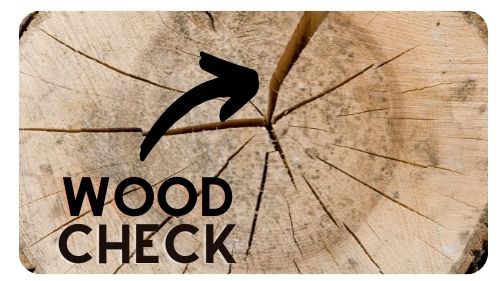The density of a wood type plays a big role in how suitable it is for carving. And when you’re dealing with a wood like Olive wood, manual whittling does not go well with this dense hardwood.
So, in this post, we cover which types of wood are suitable for different types of carving styles. You’ll also find out exactly how hard Olive wood is — and why it matters when it comes to carving this hardwood.

This post may contain affiliate links to products that we receive a commission for (at no additional cost to you). Learn more here.
What Is The Best Wood For Woodcarving?
The answer to this depends on your wood carving technique.
Some carving techniques use hand tools and require a light touch. So, these carving styles require low density soft pliable woods.
On the other hand, there are some carving styles that need a heavier hand — and in some cases they even require power tools. So tougher wood types are more suited for these styles.
OK…So What Types Of Wood Are Best For Different Carving Techniques?
Well, when it comes to light touch carving that uses manual hand tools, you should use pliable woods.
So for whittling, Basswood and White Pine are good choices, because these two timbers don’t require a lot of force to cut. And, these timber types also hold designs rather well too.
For styles that require a bit more force, (such as Chip Carving), then Black Walnut and Cherry, are ideal.
But, when it comes to intense carving styles — of the kind that require power tools — you need very tough timber. So, for styles like Chainsaw Carving, you need to use a tough timber such as European Oak (a.k.a White Oak).
What About Olive Wood? What Type Of Carving Style Is Olive Wood Suited For?
One of the first things you need to know about a woods suitability for a carving style, is its toughness.
Very soft woods are great for delicate precise cut carving. While heavy hard timbers are not.
And, one of the ways we measure the hardness of a particular tree species, is by checking it’s Janka rating.
That Janka rating measures how much force it takes to make a dent in a piece of wood. The higher the Janka rating, the more force it takes. And the more force it takes, then the harder the timber.
Now, when it comes to power tool carving styles such as Chainsaw Carving, White Oak is a great choice wood for this particular style.
White Oak has a Janka rating of 1290 lbf. That means it will take 1290 pounds of force to make a dent in this tough durable lumber.
But, when we look at Olive woods Janka rating, it is even harder than White Oak. That’s because Olive woods Janka rating is a very solid 1520 lbf.
So What Does This Mean For Carving With Olive Wood?
Well, Olive wood is stubbornly tough, solid, and dense. And once Olive wood dries out, it becomes virtually impossible to carve into it with manual whittling tools.
Which means you’ll need a powered tool, (like a dremel), to make any delicate cuts into this timber.
Related Post: How To Silence A Dremel (Explained)
So, Olive wood is a good choice for wood turning (and even dremel power carving too). But it is a very poor choice for manually working with a whittling knife.
Also, another thing that makes Olive wood a great carving wood is the fact that it won’t go and split on you. This is all thanks to the natural tree oils coating the wood fibers of this timber.
Olive woods natural tree oils act like a penetrating oil finish (like say Linseed oil). This oil saturates the wood grain, preventing it from suffering the worst effects of drying out (i.e. cracks and splits).
Having said that, Olive wood isn’t a very stable wood, and it can still warp and twist.
What Is A Stable Wood?
Well, beyond woods toughness, another thing you need to check for is a wood types stability. You see, the more stable a wood is, then the less likely it is to warp or form wood checks.

If a wood is stable, then it’s less likely to expand/contract each time it absorbs moisture (or dries out).
Now, generally, we prevent warping and checking by sealing wood. So, a moisture-repellent wood finish, (like Boiled Linseed oil), is typically enough to stop the worst effects of warping/cracking.
Related Post: How To Make Linseed Oil Dry Faster (What You Need To Know)
However, while Olive wood may not be all that stable, it is still not prone to cracking. And that is simply due to the abundance of Olive woods natural tree oils.
To Wrap Up, Here Are The 3 Key Takeaways From This Post…
- 1). Olive wood is harder than White Oak. And once it dries, it is unworkable using a manual whittling knife.
- 2). Olive wood is suitable for carving with power tools such as Dremel’s and lathes.
- 3). Olive wood grain is saturated with natural tree oils. These oils prevent Olive wood from severely cracking and splitting as it dries out.



